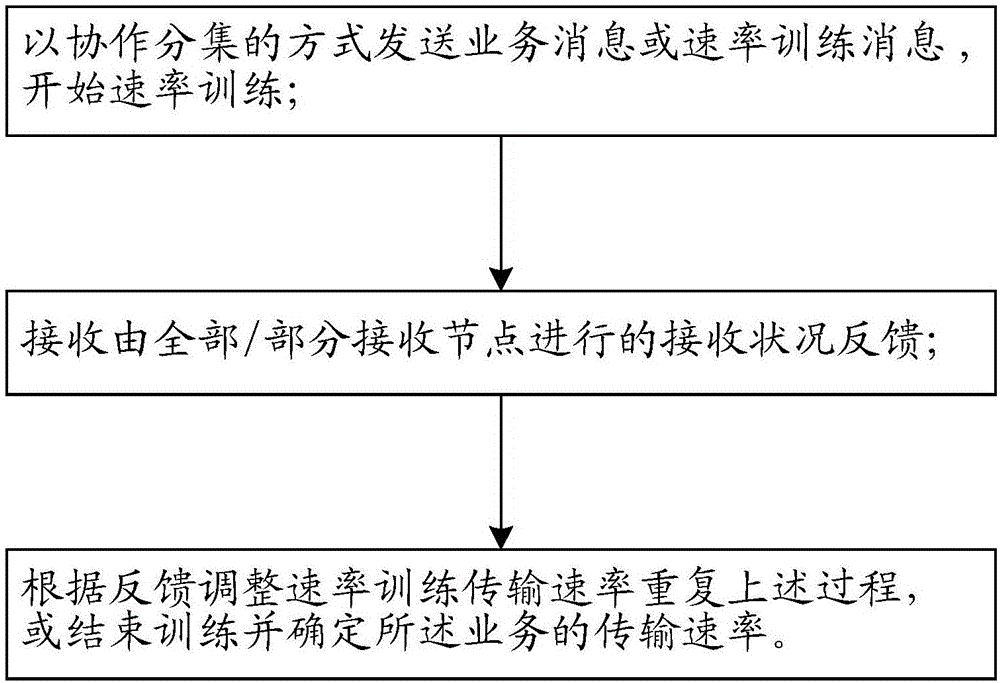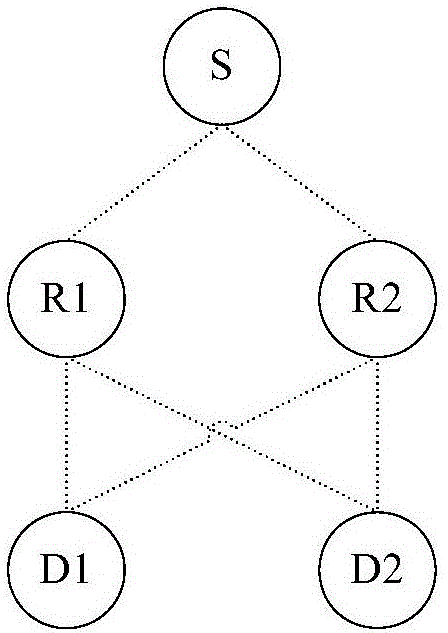Method for selecting transmission rate in cooperative diversity
A technology of transmission rate and cooperative diversity, applied in the direction of adjustment of transmission rate, transmission system, digital transmission system, etc., can solve problems such as large fluctuation range and performance loss, and achieve the effect of ensuring service reliability and optimizing service performance.
- Summary
- Abstract
- Description
- Claims
- Application Information
AI Technical Summary
Problems solved by technology
Method used
Image
Examples
Embodiment 1
[0033] The topological diagram used in this embodiment is as follows figure 2 shown.
[0034] A. Node S is the source node and needs to send a service whose destination nodes are D1 and D2. This event triggers node S to start the rate training process.
[0035] Here, the system can also preconfigure a series of transmission rate values for the nodes, and the node S can select an initial value for rate training from these preconfigured transmission rate values.
[0036] Assume that in the process:
[0037] - The standard for relay and sink nodes to perform feedback is that all sink nodes perform feedback;
[0038] ——The content of the feedback is to receive BLER, and the business requires to receive BLER<0.1%;
[0039] - The end of training is marked as reaching the maximum number of training times = 5 times;
[0040] B. The transmission rate value used by node S in the rate training process and the feedback obtained are as follows image 3 shown.
[0041] C. After com...
Embodiment 2
[0043] The topology used in this embodiment is as follows figure 2shown. Node S is the source node, and needs to send a service whose destination nodes are D1 and D2, and the reliability requirement is BLER<0.1%.
[0044] A. Node S first calculates the participating nodes of each hop in cooperative diversity at different transmission rates according to routing information and channel parameters, such as Figure 4 .
[0045] B. Node S calculates that the transmission rate to be adopted is 2.2 Mbps, and uses this rate as the initial transmission rate for rate training to trigger the rate training process.
[0046] Assume that in the process:
[0047] - The standard for relay and sink nodes to perform feedback is that all relay and sink nodes perform feedback;
[0048] ——The content of the feedback is to receive BLER, and the business requires to receive BLER<0.1%;
[0049] ——After the end of the training, the transmission rate of the training message used for the second ti...
PUM
 Login to View More
Login to View More Abstract
Description
Claims
Application Information
 Login to View More
Login to View More - R&D Engineer
- R&D Manager
- IP Professional
- Industry Leading Data Capabilities
- Powerful AI technology
- Patent DNA Extraction
Browse by: Latest US Patents, China's latest patents, Technical Efficacy Thesaurus, Application Domain, Technology Topic, Popular Technical Reports.
© 2024 PatSnap. All rights reserved.Legal|Privacy policy|Modern Slavery Act Transparency Statement|Sitemap|About US| Contact US: help@patsnap.com










